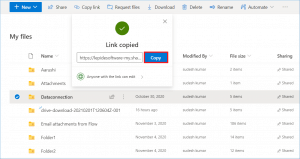

But the big differentiator is in is the way these systems store content. Google Workspace & OneDrive both follow the concept of owner, editor, and reader. While the two platforms’ permission structures seem similar on the surface, Google and Microsoft handle user permissions very differently. It’s important that as part of the file migration or synchronization, Google files are exported in a way that keeps the content as close to the original as possible within the Microsoft platform – and vice versa. If not anticipated and accommodated during the transfer, these Google file formats can cause issues for users when attempting to open or update their documents in OneDrive.


These file formats are unique to Google and are very different from the more standard format of Microsoft Office documents (Word, Excel, PowerPoint, etc.). Including Google Docs, Google Sheets, and Google Slides for instance. In most cases, organizations using Google Workspace for storage are also using the full set of G Suite applications. Native Google Docs and Microsoft Office formats Four things to remember before migrating Google Docs to OneDrive: 1. So we’ve compiled four key friction points between the Google and Microsoft platforms that you’ll want to be aware of before you try to synchronize or migrate your files. Organizations that are looking to consume both sets of APIs to transfer files across Google Workspace and OneDrive are in for a rough ride. However, there are variances that complicate the matter of synchronizing or migrating Google Docs to OneDrive. Such as Google Workspace and OneDrive, for example. Google and Microsoft have both created incredibly robust and effective file storage and collaboration platforms.


 0 kommentar(er)
0 kommentar(er)
